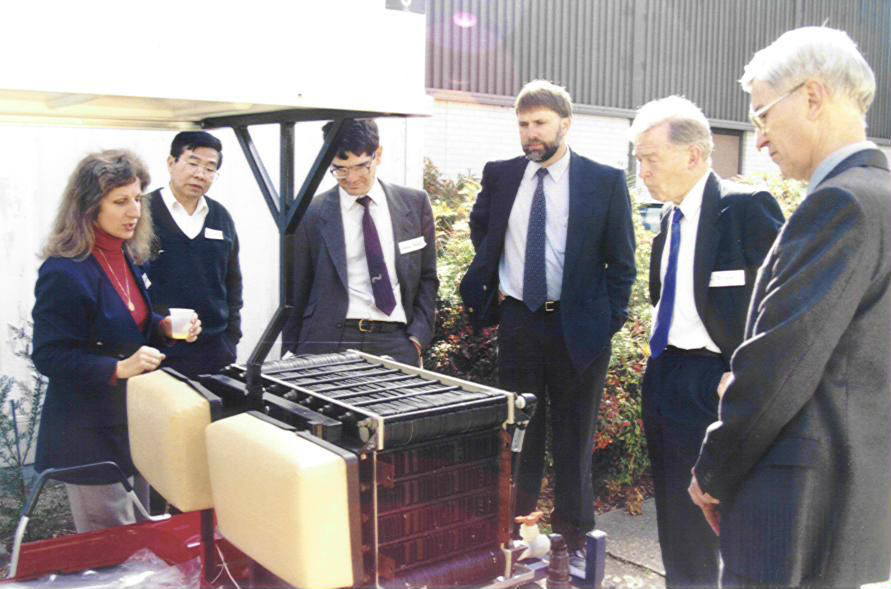
The government of Queensland will commit “at least AU$10 million (US$7.21 million)” to building a multi-user vanadium processing plant to capitalise on natural resources in the Australian state.
The funding will come from Investing in Queensland, a AU$520 million economic recovery programme, in anticipation of growing demand for the transition metal for use in redox flow batteries.
In a statement from the government of state premier Annastacia Palaszczuk of the Labor Party, vanadium was described as among a group of “new economy minerals” that could drive economic growth and employment forwards.
It was noted that Australia has the world’s third largest vanadium resources deposits, but that right now the country doesn’t “produce a single kilogram of processed vanadium” by Treasurer and Minister for Trade and Investment Cameron Dick.
“The mining companies looking to process vanadium at an industrial scale don’t have the capital necessary to make that jump. That’s where our Government can step in.”
Minister Cameron Dick said the government is in the final stages of selecting a site for its vanadium processing plant in Townsville, Queensland. It would be a ‘common-user facility,’ which multiple smaller mining companies — those without their own processing capabilities — could use.
Vanadium redox flow batteries (VRFBs) are a proven technology for grid-scale energy storage, which show promise for storing very large amounts of energy. At the moment their market share is near-negligible compared to existing pumped hydro storage and new lithium-ion battery storage facilities.
However the ability to hold more storage simply by making the tanks of liquid electrolyte bigger means the batteries could be scalable to much larger capacities and durations of storage than lithium-ion, while being easier to construct and site than new pumped hydro.
Processing and electrolyte production could be keys to success
There are various efforts being made by private actors around Australia to capitalise on the naturally-occurring vanadium resources in the country — about 80% of the world’s vanadium in industrial use today comes as a byproduct of other industrial processes, like steel-making in China, and the remaining fifth, comes from just three primary vanadium producers.
In an interview for our quarterly journal PV Tech Power, Fortune Mojapelo, the CEO of Bushveld Minerals, based in South Africa and one of those primary producers, said that while access to raw vanadium can scale with demand, it’s the ability to process vanadium and crucially to make liquid electrolyte with vanadium pentoxide, that will be key to success for players in the industry.
Some of the vanadium mining efforts in Australia will be based in Queensland, with the Palaszczuk government having given approval to a AU$250 million facility by Multicom Resources just a few weeks ago. Multicom’s mine, Saint Elmo, would support 400 jobs in the region.
Minister for Resources Scott Stewart said the mine would lay the foundation for a “next level industry in Queensland manufacturing vanadium redox flow batteries”.
“Saint Elmo is just the beginning, with other companies progressing other potential vanadium mines in what could become a world-class vanadium hub in the North West, so having this processing facility in Townsville will ensure locals reap the benefits.”
Stewart, who is also a local representative for Townsville, said the government is expected to sound out the market early next year to get detailed engineering assessments and costings for the processing plant. Construction is then expected to begin during 2022 and the plant go into service the following year.
In September, Energy-Storage.news gave an overview of some of the vanadium battery industry activity taking place around Australia from the country’s aspiring upstream and vertical integration players.
Developments of note included a vanadium electrolyte manufacturing plant in South-East Queensland with 2 million litres annual production capacity in development by Vecco Group, a company which is looking to source vanadium from its new mine in the state. That annual production capacity would equate to about 30MWh of VRFB electrolyte, but the company said it will scale that up with demand to 300MWh.
Another company, Australian Vanadium, is developing mining facilities on the other side of Australia, is targeting full vertical integration and received a AU$3.9 million grant from the Australian federal government’s Modern Manufacturing Initiative to fast-track the Western Australia-headquartered company’s manufacturing facilities build-out.
www.energy-storage.news

